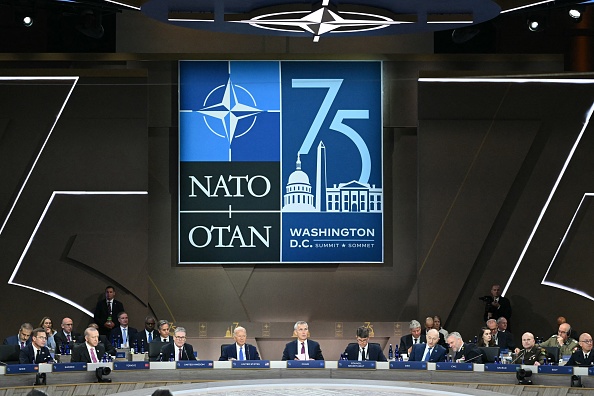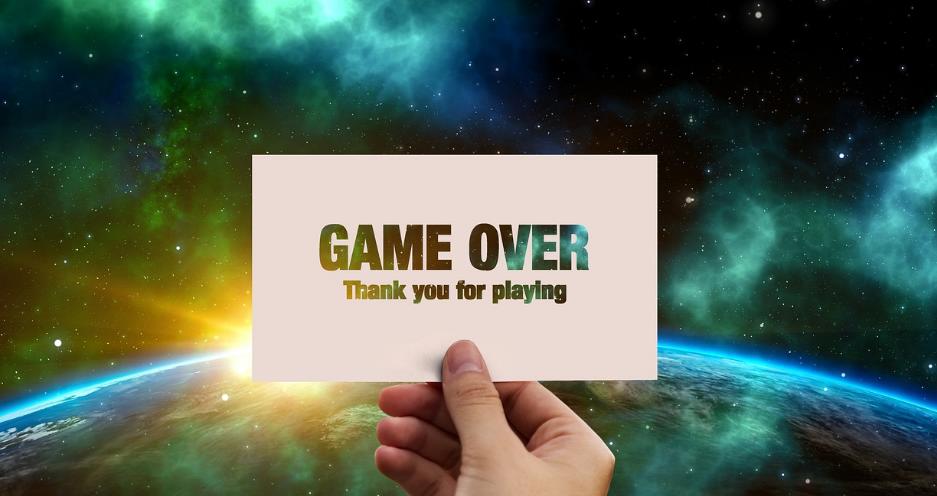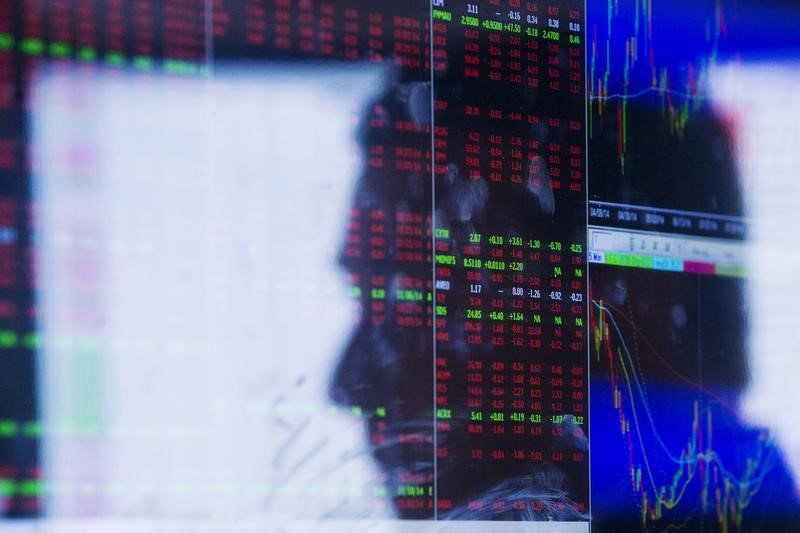Sarah Hanson-Young says she will support ‘yes’ vote in voice referendum
Katharine Murphy
Readers following the political debate around the voice to parliament will be aware there’s been some confusion over the past 24 hours or so about the Greens. On Tuesday, a report in the Australian newspaper suggested the party’s First Nations spokesperson, Lidia Thorpe, had telegraphed backing the no case to businessman Warren Mundine. Thorpe later told my colleague Sarah Martin that report was false. She would not be backing the “no” case.
Throughout this debate, the Greens have signalled it is important for the government to act on the three elements of the Uluru statement – voice, truth and treaty. Thorpe repeated that view yesterday. Today, Thorpe’s colleague Sarah Hanson-Young was asked to clarify the Greens position. Hanson-Young again articulated the party’s position on the three elements, but also made it abundantly clear she and “my colleagues” would be supporting the yes campaign for the voice to parliament. Here, for the record, are her comments in full.
Hanson Young:
As Lidia Thorpe has said, she is not going to be backing the no campaign and the Greens support the full implementation of the statement from the heart, and we want the parliament to respond to that request from First Nations people to act, to give voice, to give treaty, to give truth. Our party is committed to backing the Uluru statement and doing everything we can to make sure First Nations people are listened to and responded to in the way they have asked [for] out of that statement of the heart. That’s a really important message to the rest of the Australian community.
As Lidia Thorpe has said, she’s not backing the no campaign, and I am looking very much forward to supporting the yes campaign. I’m going to be supporting the yes campaign, my colleagues are going to be supporting the yes campaign and we need to make sure this delivers for First Nations people. There are a lot of issues First Nations people deal with every day that this parliament has not dealt with and we need to and our leaders need to.
I want to be really clear about this: I support the yes campaign and I’ll be doing everything I can to support it.
Key events
Filters BETA
Kangaroo advocates slam new Tourism Australia campaign
Kangaroo advocates are accusing Tourism Australia of cashing in on the beloved species to lure tourists Down Under, while turning a blind eye to their demise.
Tourism Australia today unveiled a computer generated souvenir kangaroo ‘Ruby the Roo’ as the mascot for its ‘Come and Say G’day’ campaign, voiced by Australian actor Rose Byrne.
Former Australian Test Cricketer and Kangaroos Alive ambassador Jason “Dizzy” Gillespie said the Federal and NSW governments are happy to use the iconic animal to promote tourism on billboards around the world, while at the same time, ignoring concerns about the commercial killing of kangaroos.
A NSW parliamentary report into the Health and Wellbeing of Kangaroos examined the management of the commercial kangaroo industry, found evidence of an unsustainable animal welfare crisis with both the NSW and Federal Governments forced to admit that no one is monitoring how the animals meet their end.
The inquiry recommended greater transparency of kangaroo management plans, programs and practices.
Gillespie said:
Tourism Australia even said we’re so lucky to have a globally recognisable and adorable icon in the kangaroo.
We need to learn to value these international icons and acknowledge that they are worth much more to Australia alive. Our tourist industry relies on them.
The kangaroo is on our Australian coat of arms, it’s the Australian made symbol and it is a much loved animal not just here in Australia but all over the world.
Queensland researchers unlock Alzheimer’s barrier
Queensland researchers have forged a path to delivering Alzheimer’s drugs directly to the brain in a major scientific breakthrough, AAP reports.
Scientists at the QIMR Berghofer Medical Research Institute created models of the human blood-brain barrier, a wall of cells that protects the brain with pathogens and toxins, and successfully opened it.
The barrier works as a natural shield and blocks 98% of disease-fighting drugs from entering the brain.
QIMR Berghofer scientists created blood-brain barrier models using stem cells from Alzheimer’s patients and successfully unlocked the barrier using focused ultrasound.
In a remarkable breakthrough, the scientists opened the barrier to drugs that can combat Alzheimer’s disease.
The group’s leader, Prof Anthony White, said:
It’s a major breakthrough in terms of understanding the way that we can deliver drugs to the brain.
We’re really on the cusp of being able to make some kind of difference in people with Alzheimer’s disease.
Stem cell researcher Dr Lotta Oikari said the results were very consistent and researchers were able to replicate the experiment a number of times.
She said the model can potentially identify previously tested drugs that might have failed and attempt to deliver them more efficiently with the new method.
Fellow researcher Joanna Wasielewska hoped the research would be a therapeutic breakthrough for Alzheimer’s patients. She said:
The very first clinical trials show its safety in human patients.
We are really at this last step of breaking the ultrasound-mediated drug delivery to patients suffering from brain disorders.
Researchers are already working on developing models for motor neurone disease and childhood dementia.
Victoria’s severe weather warning expanded to Melbourne and north-east
Indonesian ambassador speaks at Canberra memorial, paying tribute to victims and partnership between two nations
Indonesia’s ambassador to Australia, Siswo Pramono, has spoken at the memorial in Canberra marking the 20th anniversary of the terrorist attacks in Bali.
Twenty years ago today a hideous crime struck and it was one of the saddest days in Indonesian history. Twenty years ago a group of terrorists tried to enforce their belief on to others by way of violence, which resulted in 202 people were killed and 209 people were injured.
Pramono acknowledged the Australian and Indonesian victims of the attack, as well as the “overwhelming grief” their loved ones were left with. However, he said that the terrorists couldn’t take away “our love and compassion to others and the idea of people are equal in rights and freedoms”.
Pramono also spoke about the cooperation between the nations in the aftermath of the attack to bring the perpetrators to justice:
In the days that followed the attacks, Indonesian law enforcement officers assisted by the Australian police put in a relentless effort to bring the perpetrators to justice. Indonesia and Australia are nations of resilience and vigilance rising out of the terrorist attack we have a better and stronger bond among us.
Indonesia and Australia developed the Jakarta Centre for Law Enforcement Cooperation. This reflects the determination of both governments to build a better law enforcement institution and system in Indonesia and other countries as well. This initiative wins active support from partner governments and international law enforcement agencies.
The relations between Indonesia and Australia improve from strength to strength. In the latest development, the two countries have managed to further strengthen the bilateral ties and politics on economics, defence, culture, and people to people. The visit of Prime Minister Albanese to Indonesia and the delegation last June has further strengthened this strategy partnership. Indonesia and Australia are not just neighbours, but most importantly we are also partners.
Australia considers offering to train Ukraine troops
As the prime minister, Anthony Albanese, did his media rounds this morning, he revealed Australia is considering offering training to Ukraine troops.
We brought you some of his comments earlier on the blog, and now my colleagues in Canberra Amy Remeikis and Daniel Hurst bring you the full story here:
Severe weather warning for NSW expanded to include Alps
Intense rain and flood warnings for Tasmania
People in Tasmania have been urged to prepare for widespread heavy rain and potentially dangerous and life-threatening flash flooding in parts.
A severe weather warning is in place for the island state’s north and central regions, and the east coast, which is tipped to be hit by dangerous winds.
Heavy rain is expected from Wednesday evening to Friday, with the north expected to cop the worst, including intense local falls.
The Bureau of Meteorology says 24-hour totals on Thursday are expected to reach 60 to 120 millimetres, with isolated totals up to 180mm over higher terrain.
Potentially dangerous and life-threatening flash flooding, with 100mm of rain falling within six hours, is possible in the Great Western Tiers.
The SES says widespread minor or moderate flooding is likely from Thursday and major flooding is possible at some locations. Acting director Leon Smith said:
People are encouraged to be aware of the forecast and prepare their property before the rain arrives.
This means knowing your flood risk and understanding whether your property is prone to flooding.
With the ground being saturated in many areas of Tasmania, rivers will rise quickly over coming days.
Heavy rain is tipped in Australia’s east and south in coming days.
Sarah Hanson-Young says she will support ‘yes’ vote in voice referendum

Katharine Murphy
Readers following the political debate around the voice to parliament will be aware there’s been some confusion over the past 24 hours or so about the Greens. On Tuesday, a report in the Australian newspaper suggested the party’s First Nations spokesperson, Lidia Thorpe, had telegraphed backing the no case to businessman Warren Mundine. Thorpe later told my colleague Sarah Martin that report was false. She would not be backing the “no” case.
Throughout this debate, the Greens have signalled it is important for the government to act on the three elements of the Uluru statement – voice, truth and treaty. Thorpe repeated that view yesterday. Today, Thorpe’s colleague Sarah Hanson-Young was asked to clarify the Greens position. Hanson-Young again articulated the party’s position on the three elements, but also made it abundantly clear she and “my colleagues” would be supporting the yes campaign for the voice to parliament. Here, for the record, are her comments in full.
Hanson Young:
As Lidia Thorpe has said, she is not going to be backing the no campaign and the Greens support the full implementation of the statement from the heart, and we want the parliament to respond to that request from First Nations people to act, to give voice, to give treaty, to give truth. Our party is committed to backing the Uluru statement and doing everything we can to make sure First Nations people are listened to and responded to in the way they have asked [for] out of that statement of the heart. That’s a really important message to the rest of the Australian community.
As Lidia Thorpe has said, she’s not backing the no campaign, and I am looking very much forward to supporting the yes campaign. I’m going to be supporting the yes campaign, my colleagues are going to be supporting the yes campaign and we need to make sure this delivers for First Nations people. There are a lot of issues First Nations people deal with every day that this parliament has not dealt with and we need to and our leaders need to.
I want to be really clear about this: I support the yes campaign and I’ll be doing everything I can to support it.
Penny Wong recognises first responders to Bali bombings
The minister for foreign affairs, Penny Wong, has spoken at the Canberra memorial. She acknowledged the 202 lives “so callously taken” including 88 Australians, 38 Indonesians and citizens of 20 other countries.
As well as the victims, Wong acknowledged the contribution of first responders in attempting to save the lives of victims as well as the Australian government in acts like arranging the last phone calls of victims with loved ones.
Ultimately, the terrorists failed. Because, while an act of terror might shake us, it cannot change us. Those who attacked us wanted to divide Australia and Indonesia, to shatter the bonds between two great democracies, painstakingly built on multi-faith, multicultural foundations. And to strike at what makes us all human.
But the worst of humanity brought out the very best. Out of that dark acts, were bored such radiant acts of courage and of love. The story of that night is also one of great courage and resilience, a story that many of you here know so well.
Survivors became saviours, somehow overcoming their pain. First responders, among them medical staff, police, embassy and cultural officials, and local volunteers, ran towards the devastation. Rescuing everyone they could. Going back time and time again to help the injured and comfort the dying.
In the face of exhaustion and horror, hospital staff in Bali worked around the clock to save lives and treat catastrophic injuries. There were outstanding contributions that night and afterwards from across the Australian government. People like Australia’s consular general advice consul David Chaplin both with us today. They were among the first of the scene. They comforted the victims, including those who could not be saved, desperately arranging phone calls so loved ones could speak with them in their final moments.
Civilian and military aircraft mobilised to transport the victims regardless of nationality to Perth, Darwin and other specialised bird units. Australian medical staff including Dr Fiona Wood undertook life-saving surgery at medical treatment on the many dozens of seriously injured victims, keeping them alive when hope seemed lost, and blessing them through their pain.
Attack failed to drive Australia and Indonesia apart: John Howard
At the same time as that memorial in Sydney, another is taking place in Canberra.
Former prime minister John Howard, who was the country’s leader at the time of the Bali bombings, has reiterated the message of solidarity with Indonesia like Anthony Albanese.
Former PM John Howard reflects on the Bali bombing tragedy, speaking at the National Memorial Service in Canberra.
“Their goal included driving a wedge between Australia and Indonesia, and that failed.
It’s a reminder that evil is always there.” @9NewsAUS #auspol pic.twitter.com/IXRink3q8D
— Reece D’Alessandro (@R_DAlessandro9) October 11, 2022
‘We will never let them fade’: PM remembers victims of Bali bombings
Albanese returns to the heavy toll the attack took and the difficulty of grief which does not abate with time, 20 years after the attacks.
But they did take life. They left survivors to rebuild themselves physically and mentally. They left families and friends struggling with loss. For them, and for so many people here today, the world could never be the same again. 20 years on, so pretty hearts are still tethered to that cool night. Every beach tempered by an abiding sorrow. Many currents were stopped in the great river of life that night. Some are still stranded on the back, unable to walk away.
Grief is its own creature. Grief does not travel in straight lines. Grief may soften with time, but it does not fade.
As my predecessor Julia Gillard put in a decade ago, “Bali is a place like London and Gallipoli were something of the Australian spirit dwells upon another shot.”
It is a beloved shore. Indonesian people have reached out to generations of Australians as friends and neighbours. They felt our great pain that night and we felt there … families, friends and community. Its three parts are bowed in sorrow but they hold each other because, it unity, we find strength and we find hope, and we find love. We find each other. And that is how we come together, including today.
Our hearts filled with everyone who never came home and card to be with us. It feels also with everyone who never came home the same, everyone who still carries the loss and every survivor that we have lost since. We hold onto their names and faces, and we will never let them fade. Let them live in eternal peace.
After Albanese’s speech, Coogee local Joe Sullivan performed You will never walk alone, with many in the audience at the memorial breaking down in tears at the emotional rendition.
Bali bombing terrorists could not defeat Australian ideals, PM says
Albanese goes on to pay tribute to those people who stepped up amid the horror:
We think of those who survived, and we think of those who helped. What they saw that night will never leave them. In a minute, all the very worst of circumstances brought out the very best in people. It brought out compassion, selflessness, it brought out heroism.
That night, the terrorists could not achieve their aim stop what they struck, they could not defeat, because what they struck at was the idea of us. The great fabric of dreams and ideals and compassion and fairness that make us who we are as Australians. Indonesians, Australians, people from all over the world, they struck at the friendship between us, they struck at the joy of a free people. They struck at humanity, but we remain.
In the end, they reminded us of what is so important to us, and to not take for granted what we have built and nurtured over generations. They sought to create terror, but people around towards the terror to do what they could for friends and strangers alike, because what drove them was a higher, more human instinct than those who attacked them.
What the architects of this slaughter achieved was to make us reflect on what we must truly value, and to hold onto its more tightly than ever before. No terrorist could take this from us.
Anthony Albanese speaks at Bali bombings memorial in Sydney
The prime minister, Anthony Albanese, is speaking in Sydney where a commemorative service is being held on the 20th anniversary of the Bali bombings.
He acknowledges the other leaders who are present, including opposition leader Peter Dutton, but says he wants particularly to acknowledge the family and friends of those who lost loved ones 20 years ago today.
Albanese highlighted the effects the attack had on many Australian sporting clubs whose members were in Bali during the attacks. The service in Sydney is being held in Coogee, where the rugby league club the Coogee Dolphins lost six members.
20 years ago, the shock waves from Bali reached our shores. 20 years ago, and acts of malice is calculated depravity robbed the world of 202 lives, including 88 Australians. 20 years on the ache does not diminish.
For most of us, what happens on that fateful night is beyond imagining. The sudden, terrible light followed by the sudden, terrible darkness. The awful postscript of fire, alongside the local workers and residents were teammates, enjoying the end of season holiday.
Members of the Kingsley football club, the Sturt football club, the Southport Sharks and the players from my electorate. I know that Debbie Borgia’s husband is here today who lost his wife, and the youngest victim, his daughter, in that tragedy, Abbey Borgia.
And of course the Coogee Dolphins, in an act of remembering teammates. We think of them with the ache of knowing that they should still be here. That senses filled with everything that we feel now. The salty tang of the air, the sea, in its ancient rhythm, primary against beach and cliff, the tapestry of voices for which they were all such an electrical part. So many futures were stolen on that night. We think of every conversation ever had, every moment of love never known.
Nine News have some images of how bad flooding is in Victoria.
Meteorologist Jane Bunn posted this map which shows the extent of the further heavy the deluge on the way for the state:
Rain spilling over the great divide into Melbourne this morning (rather than from afternoon as models suggested). 2-10mm today.
Rain increases THU – heaviest THU night. Why? That’s when the front hits, so we have high confidence in the timing of that part.
35-70mm total. pic.twitter.com/6Qo8Jwneqr— Jane Bunn (@JaneBunn) October 11, 2022
Man dies in NSW flood waters
The body of a missing man has been found in his submerged car in the state’s central west following flooding.
The death of the 46-year-old comes as much of New South Wales braces for further inundation, with more than 100 flood warnings in place, AAP reports.
The man was last seen at Essington, south of Bathurst, about 11am on Sunday, with a search launched when he failed to return home on Monday.
About 10.30am on Tuesday a police helicopter crew found his car fully submerged in Campbells River at Charlton and State Emergency Service crews recovered the vehicle with his body inside.
Parts of already sodden NSW are predicted to cop as much as another 65mm of rain by week’s end.
The Bureau of Meteorology says a trough approaching from the west is expected to bring thunderstorms to the central and southern inland on Thursday and Friday as it crosses the state.
Senior forecaster Jonathan How said from late Thursday into Friday, heavy rain would push into Victoria’s north-east and across the western slopes of NSW.
This may cause renewed flooding along rivers in parts of the central west and southwest from Friday, many of which are already full due to heavy rain in recent months. How told ABC TV today:
But thankfully for those flood-affected communities including Bathurst, Gundagai and Forbes … the heaviest rain will be further south.
But of course, we are expecting to see some local creek and river rises.
SES volunteers have responded to more than 1,000 calls for help since Friday evening.

Peter Hannam
RBA outlines how it determines elusive ‘neutral’ interest rate
The Reserve Bank of Australia this morning has opened up on how it works out the “neutral” interest rate. It’s effectively the Goldilocks rate that is neither contractionary for the economy nor expansive, Luci Ellis, an assistant governor, says.
But we’re not at the neutral rate just yet. The cash rate is at 2.6% after last week’s surprisingly small rise of 25 basis points rather than the 50 basis points most economists expect.
Investors have been again lifting their expectations of how high the rate will go, and are toying with a 4% rate in about a year’s time.
Anyway, back to that Nirvana of cash rate neutrality – the RBA targets that elusive level over time. Given the expectations of where inflation is going lately, it’s good that they take a long lens.
Ellis says:
Current inflation is very high, and expected to stay high in the short term.
But beyond the next year, inflation expectations remain well anchored inside the target range, both here and overseas.
If that anchor were to loosen, that’s another story.
In recent decades, the neutral rate has been sinking, for some interesting if unclear reasons. One issue, post global financial crisis, is that prospects for global growth over time have dimmed, so businesses saw little incentive to invest in expansion (and bought back their own stock instead).
(If China ends up in a real estate derived funk, there goes the dynamo that kept Australia and much of the world’s economy humming after the GFC.)
Ellis says economic theory tells us the neutral rate is “real” because inflation-adjusted interest rates matter for people’s saving and investment decisions.
People look through the expected inflation component of nominal rates; lenders expect to be compensated for it, and borrowers expect to have to provide that compensation.
The RBA’s ‘neutral’ rate has been trending down for a while…but as lately been trending up. Since the rate is also ‘real’ – as in more than inflation over time – how much further it might increase will hinge on how successful RBA is in containing and then reducing inflation. pic.twitter.com/iktARFbS9W
— Peter Hannam (@p_hannam) October 11, 2022
Not surprisingly, there is no magic number that tells us what the neutral rate is, or will be, since conditions are always shifting.
So where does it leave us? To the RBA, the neutral rate is just “a pole-star to guide us”.
“[A]s we navigate the narrow path to our intended goal, we welcome any faint light that those stars may cast,” Ellis says.
John Barilaro pleads not guilty to assault and malicious damage

Michael McGowan
Former deputy New South Wales premier John Barilaro has entered a not guilty plea to assault and malicious damage after an alleged altercation with a Channel Seven camera operator in July.
In a brief hearing at Manly local court on Wednesday morning, at which Barilaro was not required to appear, his lawyer, Danny Eid, entered a not guilty plea on his behalf.
Barilaro was charged with assault and malicious damage following an alleged run-in with the cameraman, Matt Costello, at Manly on 23 July.
Outside court on Wednesday Eid said Barilaro would “definitely” be defending the charges. He said:
We’re not laying low on this one.
Despite reports Barilaro also faced a civil suit brought by Costello over the alleged damage of his camera equipment, no case has yet been brought, and Eid said he was “not aware of any civil proceedings”.
The case is due to return to the court early next year.
Australian leaders pay tribute to Bali bombing victims and survivors
Like many Australians, I remember that terrible morning 20 years ago all too well.
When recently in Indonesia, I signed the Bali Bombing condolence book.
Although many years have passed, our nation’s sense of loss and grief is undiminished. pic.twitter.com/CArPUTqCx4
— Chris Bowen (@Bowenchris) October 11, 2022
Today is the 20th anniversary of the Bali Bombings, an horrendous act of terrorism that took the lives of 202 people including 88 Australians. It’s a day to reflect on this tragedy & remember the bravery shown by many that night. My thoughts & love are with all those affected
— Dr Sophie Scamps MP (@SophieScamps) October 11, 2022
It is 20 years since the shockwaves from Bali reached our shores.
88 Australians lost their lives in an act of terror and cowardice, of the 202 people from around the world who lost their lives.
Today, I want to say thank you to the ADF whose response was integral 20 years ago.
— Richard Marles (@RichardMarlesMP) October 11, 2022














